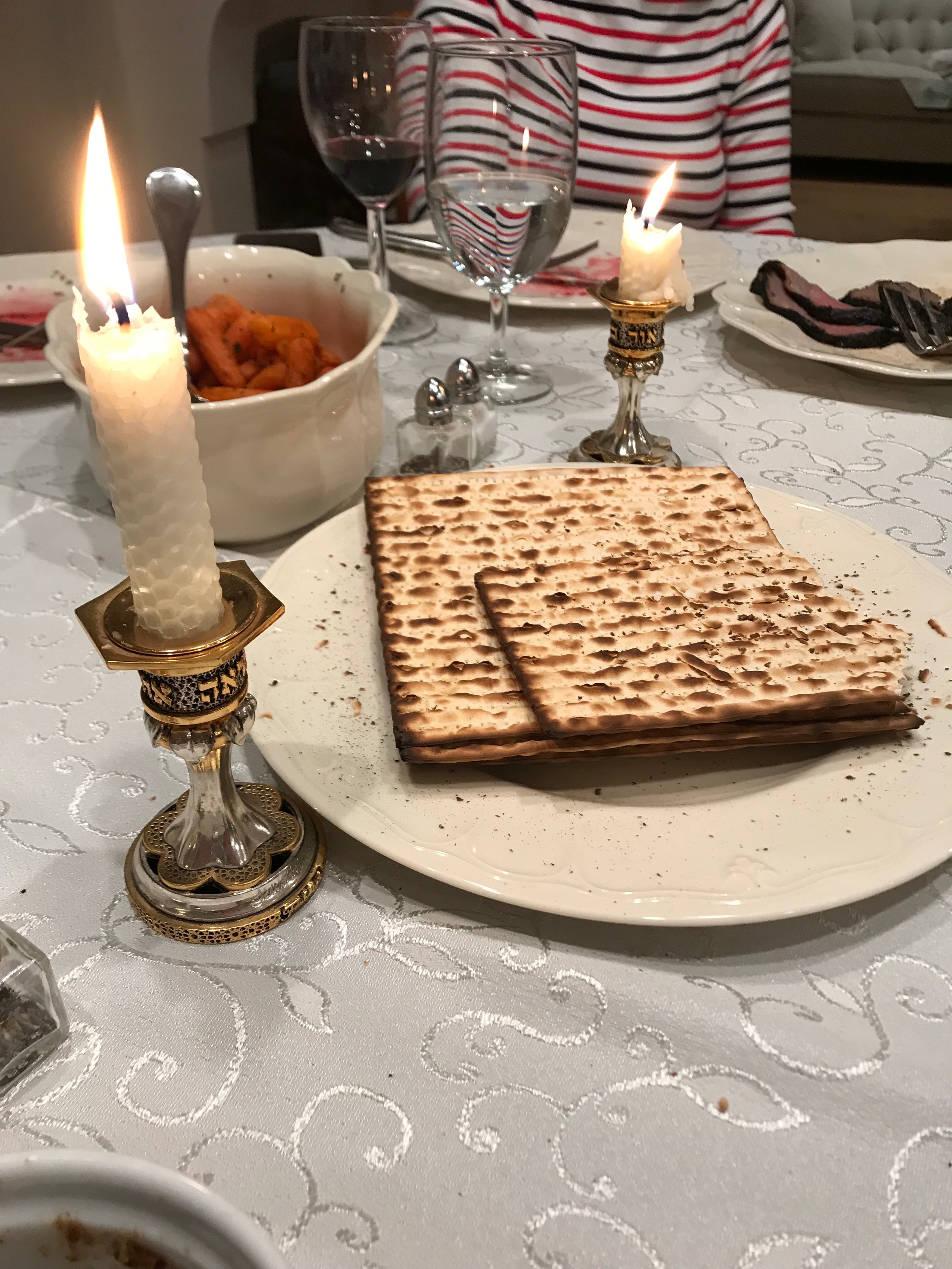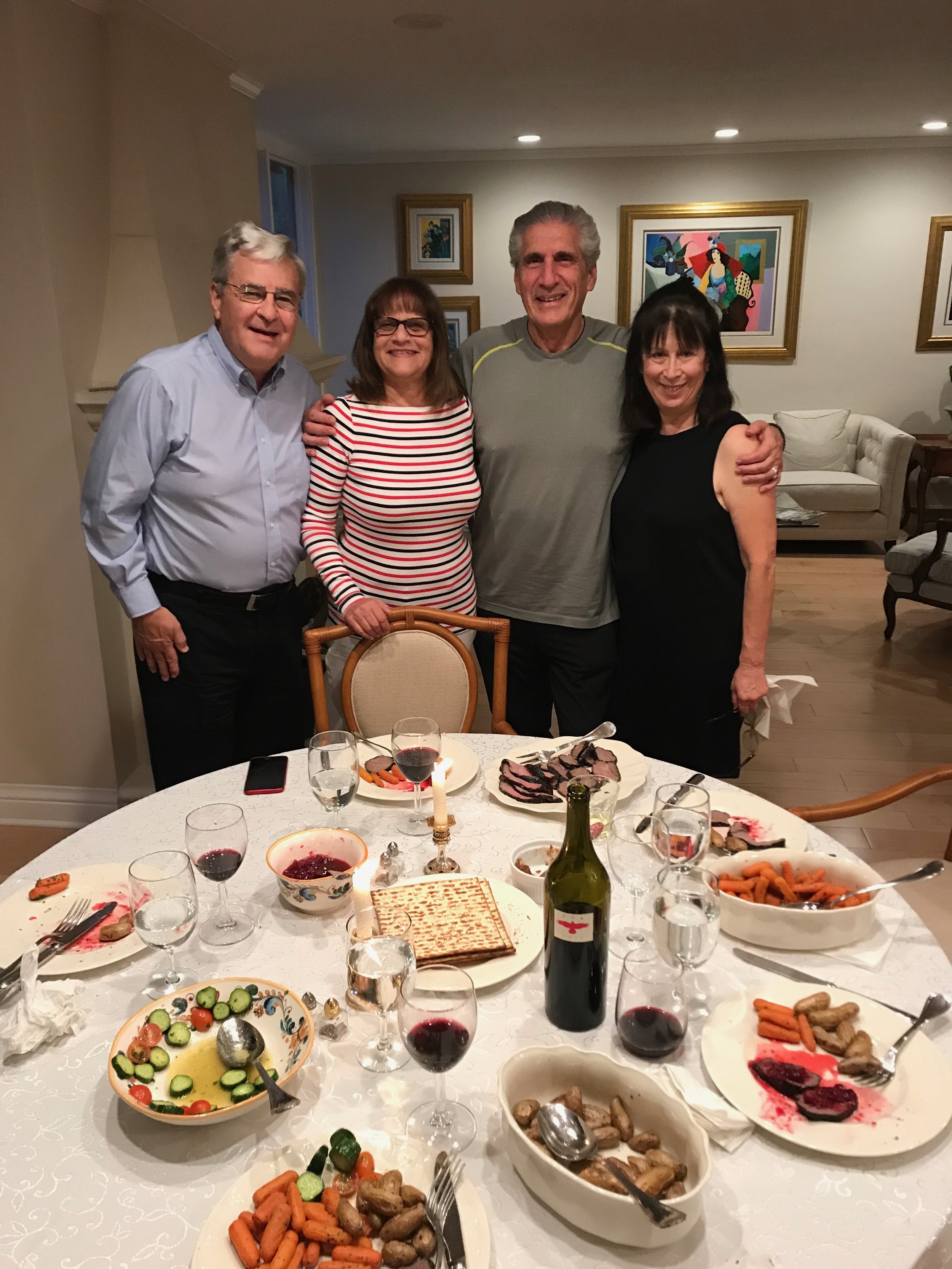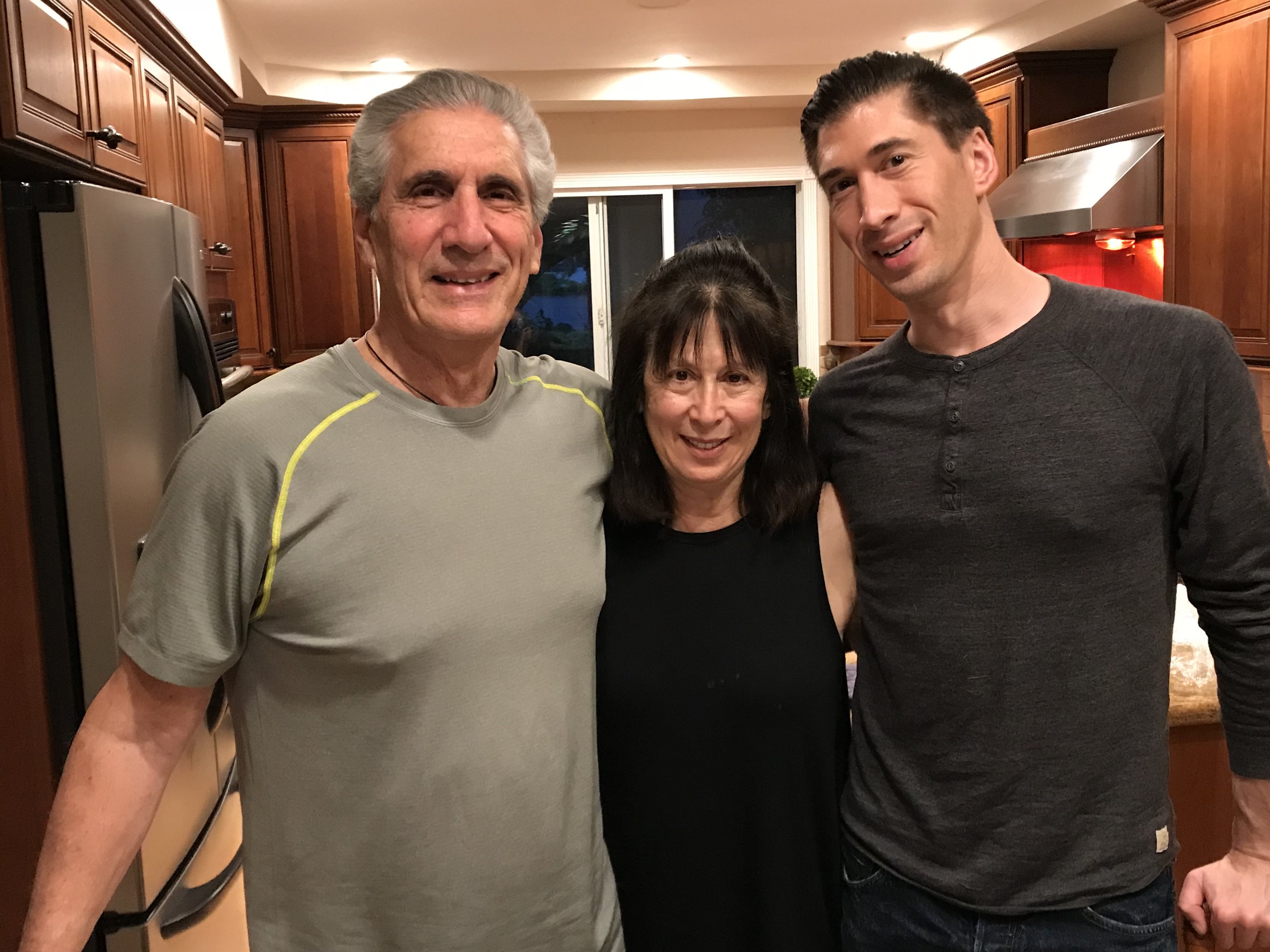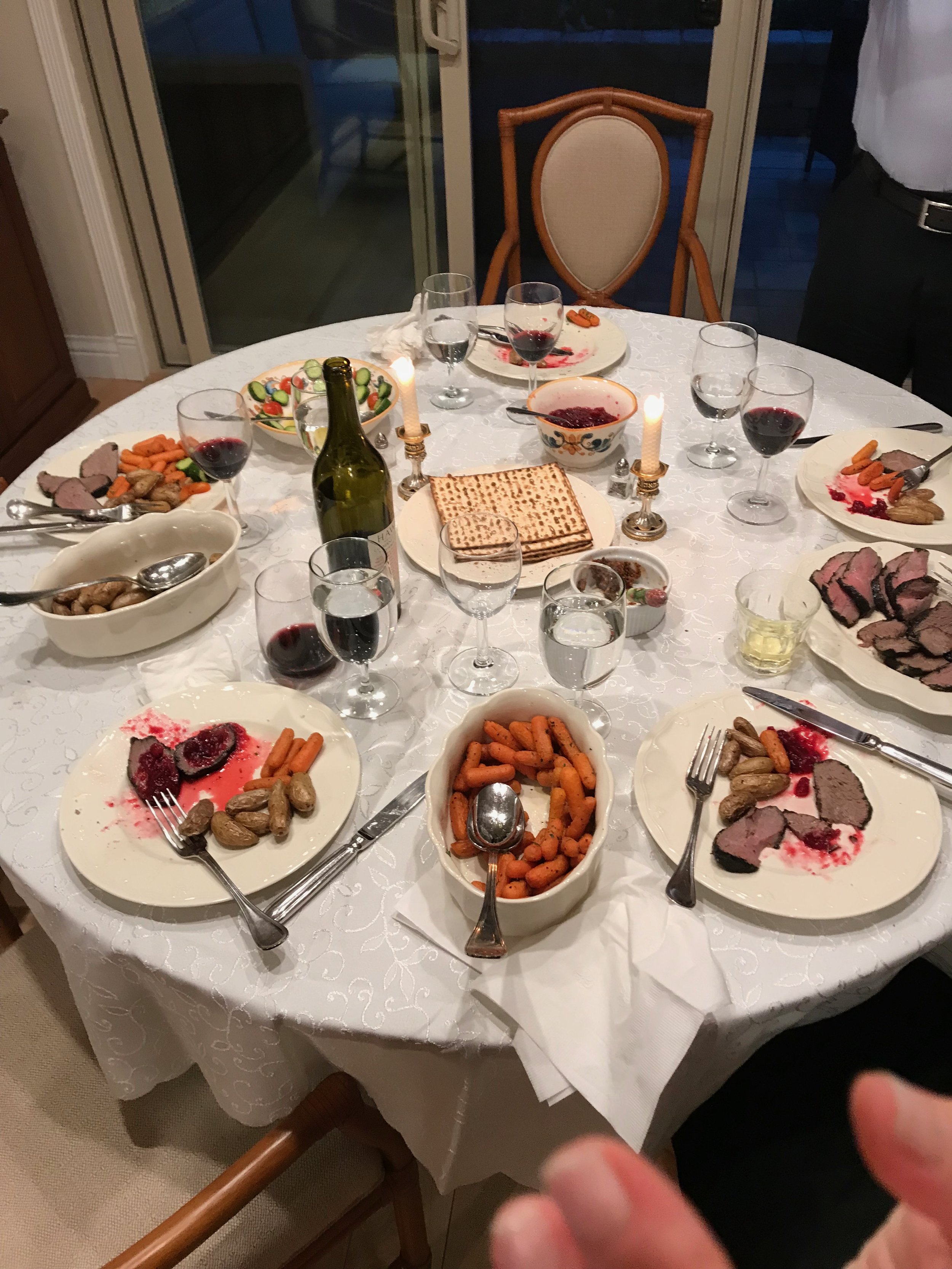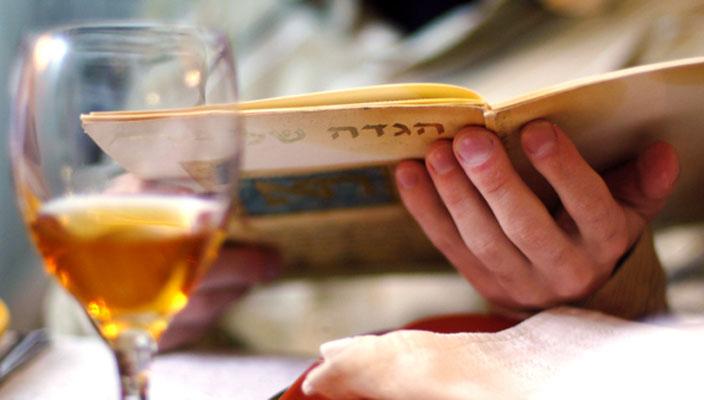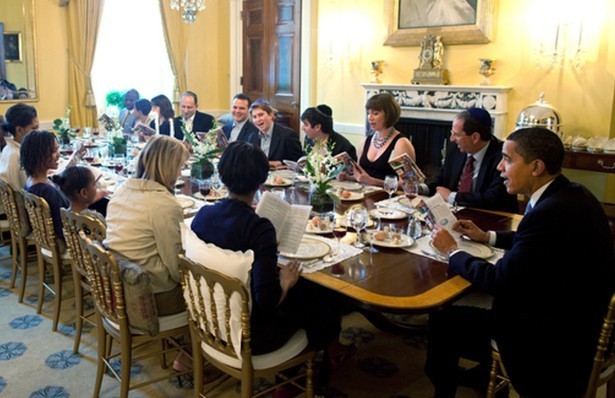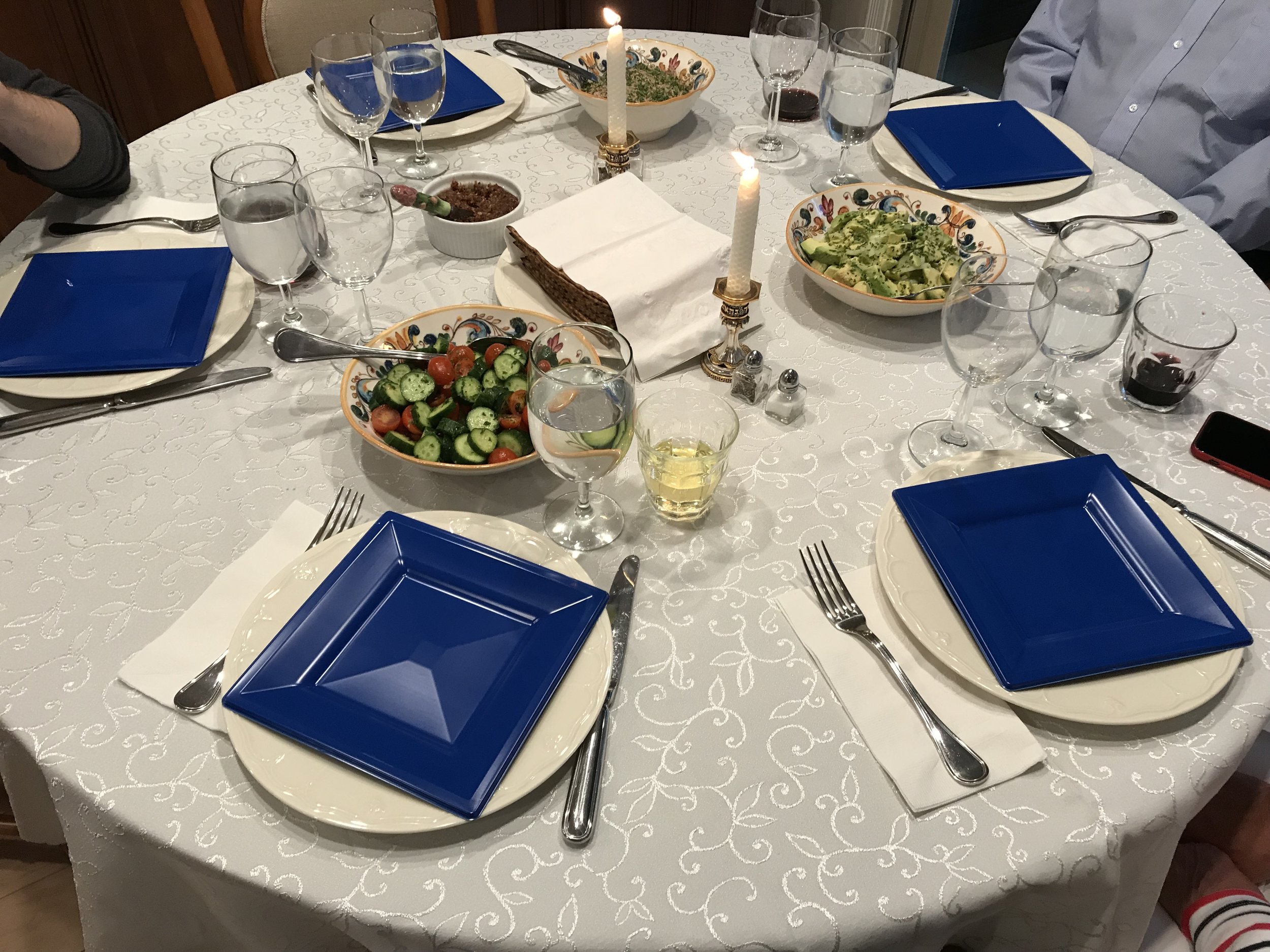Like every year Cecile wanted to prepare a Passover Seder. It was only going to be her, Jason and myself. Our daughter Michelle and her husband Kyle couldn’t make it this year. We discovered that our friends and neighbors, Susan and Nelson Bye were free and were more than delighted to join us. After the candle lighting blessing, and the blessing over the wine and Matzah (unleavened bread), dinner was served. Cecile prepared a wonderful meal beginning with Charoset (a dark paste of ground dates, raisins and nuts), roasted carrots and potatoes, avocado salad, cucumbers and tomatoes, vegetarian pate and “Fred Steak,” named after a man named Fred who created a special marinade for his roasts over 40 years ago. We finished off with a heavenly home-made dessert of Chocolate Souffle with fresh whipped cream. Yes, folks, it was to die for.
Unlike other communal religious rituals, Passover’s appeal to both secular and religious Jews as well as non-Jewish guests is that it doesn’t take place in a synagogue, but rather at the dinner table. The common question asked by parents of their children during Passover is “What makes this night different from all other nights?”
The answer: Passover is an invitation for Jews to relive the liberation of their people (Ancient Hebrews) from slavery in Egypt and believe the story should be passed on from generation to generation. But in modern times the response you might get is that it is a Jewish festival that non-Jews love to attend. It has become chic to invite a non-Jew to a Jewish seder. Even the White House held a Passover seder during Obama’s presidency beginning in 2008 (See Reuters Photo).
Actually there is some precedent for this. Hillel the elder, a famous Jewish religious leader of his time and one of the most important figures in Jewish history could not recall a particular practice relating to Passover the way it has come to be known. It is said that he resolved the matter my saying, “Go out and see what people are doing.” After embracing this challenge, he concluded: “Come to my house, and you’ll see how we do it–with an array of participants. Jews, non-Jews, all are welcome here!
It would be totally understandable if Jews kept their tradition totally to themselves since non-Jews don’t share their lineage. In other words we are not a member of the tribe. Yet, non-Jews of all stripes or colors and sexual orientations that have experienced being oppressed and persecuted can relate to the Passover story. Martin Luther King Jr. alluded to the Exodus story in a speech he gave the day before he was killed. “I’ve been to the mountaintop…I looked over. And I’ve seen the Promised Land. I may not get there with you. But I want you to know tonight, that we, as a people, will get to the Promised Land.” King shared the same vision of Moses, the Jewish prophet at the center of the Passover story, who led the Israelites through the desert but wasn’t able to take that final stretch into the Land of Israel or the Promised Land.
Since Cecile and I met 46 years ago, I have become a fan of this holiday that lasts for 7 days and 8 nights. Of course, as Jews assimilate into mainstream society it’s become common for interfaith couples like Cecile and I and Nelson and Susan to share the traditions of our childhoods.
Happy Passover, to our family and Jewish friends.
Sources cited:
Lauren Davidson, The Jewish Holiday of Gentiles, The Atlantic April 14, 2014
Rabbi Peter Schweitzer, Moment Magazine, Saturday, March 31, 2018
